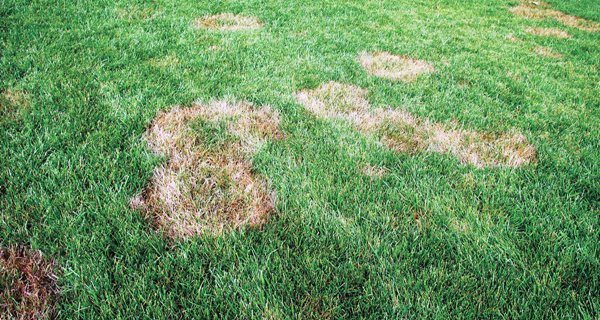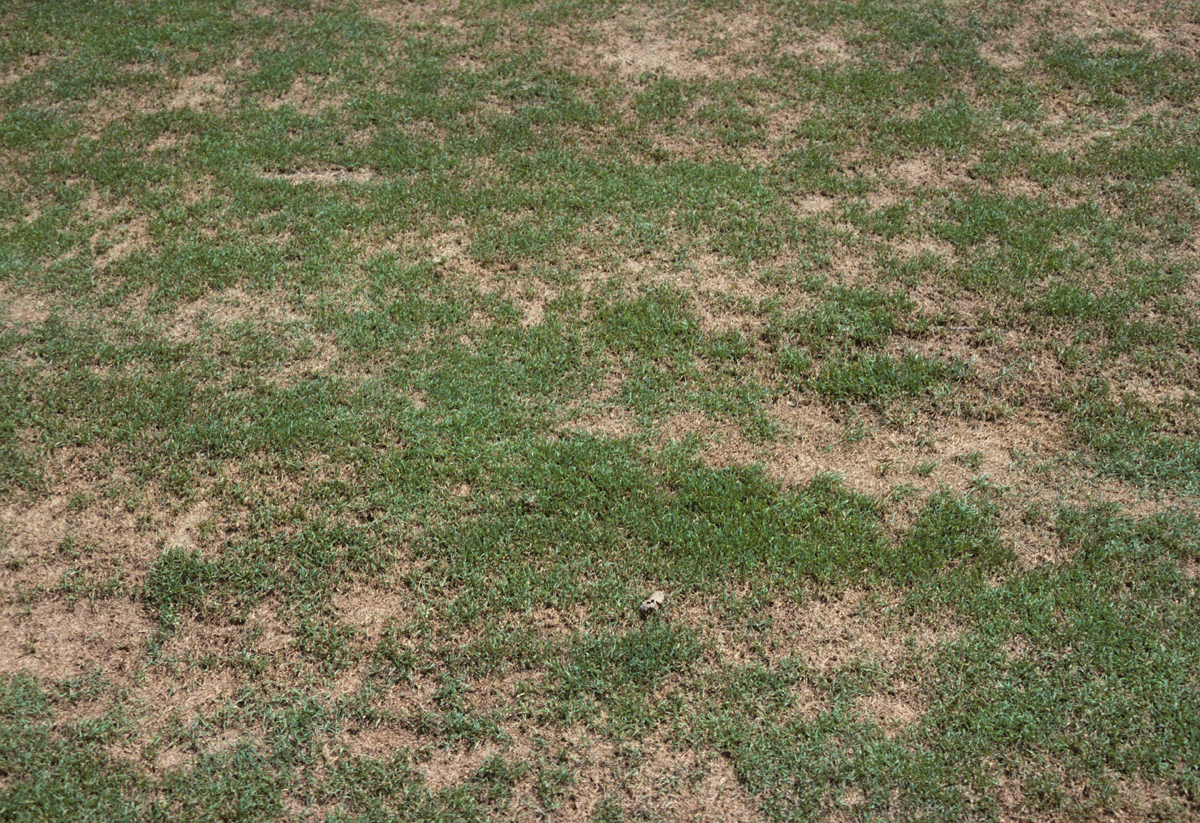Rhizoctonia Grass Treatment
Slimy-looking wet or greasy-looking grass. White yellow or brown patches.

Identification And Control Of Rhizoctonia Large Patch In Georgia Uga Cooperative Extension
Gray black orange purple or red spots on blades and stems.

Rhizoctonia grass treatment. Leguminicola is a common fungal pathogen of red clover Trifolium pratense and causes a syndrome known as black patch disease in the plant. This fungus can be found in most soils and survives as sclerotia very resistant fungal survival structures in soil. Yield losses have been reported to be up to 48 in theUS but we typically do not see this level of disease in Nebraska.
This removal can be achieved by mowing or by dragging a water hose across the area. A balanced fertilizer containing equivalent amounts of potassium and nitrogen preferably a slow-release potassium form should be applied. But the grass may recover once the infection is controlled.
Fungicide drenches are valuable tools to help prevent or eliminate Rhizoctonia. The patches and the shades your individual grass leaves turn can change too. Separate brown patches until you have very large blighted areas.
How To Control Rhizoctonia. Damage occurs on creeping bentgrass and annual bluegrass putting greens and is typically a cosmetically damaging disease which does not cause severe turf damage. According to the Penn States College of Agricultural Science removing dew water that collects on the grass leaves each morning has proven effective as an aid in reducing brown patch.
Symptoms first appear as smaller 6-12 inches in diameter patches with yellow margins. Yellow patch also known as cool season brown-patch is a Rhizoctonia pathogen similar to that of brown patch. 54 rows Cultural practices that improve water and fertility management are useful in preventing the.
Slaframine is an alkaloidal mycotoxin produced by the fungus Rhizoctonia leguminicola that causes profuse salivation slobbers in animals. Generally a complete slow-release fertilizer applied at a rate no greater than 1 pound of nitrogen per 1000 square feet of lawn with each application spaced 6 to 8 weeks apart when the grass is. Biological microorganisms such as the bacillus bacterium found in PRO-MIX BIOFUNGICIDE and PRO-MIX BIOFUNGICIDE and MYCORRHIZAE growing media will naturally suppress and reduce the incidence of Rhizoctonia.
Ever since the destructive potential of Rhizoctonia pathogens on crop plants was realized application of synthetic fungicides has been the most popular disease control measure employed by the farmers on various crops and the use of fungicides is practiced widely throughout the world. Thin threadlike wraps around the stems and roots. It starts with small discoloured patches of grass which later spread to form irregular dead patches a metre or more in diameter.
Ingestion of clover hay containing slaframine causes salivary episodes that last from several hours to over 3 days. Even today many farmers will select disease-prone and high-yielding varieties and rely totally on fungicide treatments. Rhizoctonia root rot is caused by the soilborne fungus Rhizoctonia solani.
Irrigation should only occur when necessary and during in the early morning hours between 200 and 800 am when dew is already present. The fungus can but usually does not kill the grass plant within the affected area. How to Protect your plants Lawns should always be watered in the morning so that they dry well before nightfall.

How To Treat Brown Patches In Your Yard Naturalawn Of America Inc

Identification And Control Of Rhizoctonia Large Patch In Georgia Uga Cooperative Extension

Turf Brown Patch Umass Center For Agriculture Food And The Environment

Rhizoctonia Brown Patch Unh Extension